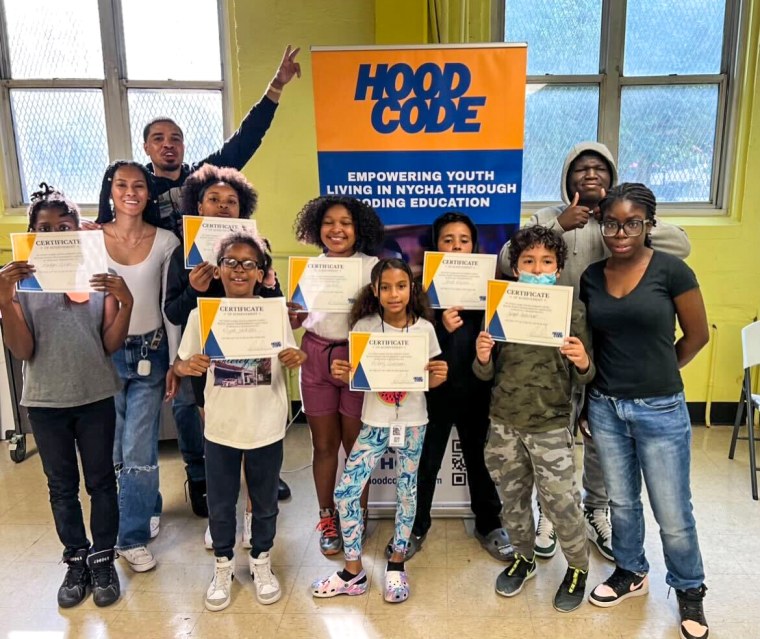This group brings free coding education to low-income NYC students
This group brings free coding education to low-income NYC students NBC News


Tucked away in the red-brick community center of the South Jamaica Houses in New York City
Tucked away in the red-brick community center of the South Jamaica Houses in New York City is a small multipurpose room filled with plastic chairs and tables. A piece of paper taped on the door shows the schedule for the day, with Hood Code starting at 3 p.m.
Hood Code: Providing Free Coding Classes to Low-Income Communities
Right on time, the quiet room fills with giggles and sneaker squeaks as children pile into the space, each one excitedly talking over the other.
Hood Code is an organization that provides free coding classes to students who live in New York City’s public housing. These apartments are home to more than half a million low-income families and individuals, and 25% of them are under the age of 18.
Founder Jason Gibson said Hood Code was specifically designed to be in these neighborhoods and serve this community.
The Impact of Hood Code

The workshops introduce the basics of coding to kids ages 8 to 13, and have so far taught about 300 children in housing buildings throughout the city. The programming also helps them develop problem-solving skills, self-confidence, and innovative thinking.
The students primarily use Scratch, a free block-based language program that allows them to express themselves creatively and learn the basics of how professional coders create some of their favorite video games and apps.
Many of the kids embark on quests to make their own video games or re-create their favorites, finding inspiration in games like Flappy Bird and Geometry Dash.
From Behind Bars to Empowering the Community

Gibson founded Hood Code in 2019, but the idea for the program was born two years prior — from behind bars.
While serving a five-year sentence, Gibson spent most of his time expanding his knowledge and researching both the tech industry and African American history.
“That was my first opportunity to really sit down and read,” Gibson said. “And I realized how much of
SDGs, Targets, and Indicators
-
SDG 4: Quality Education
- Target 4.4: By 2030, substantially increase the number of youth and adults who have relevant skills, including technical and vocational skills, for employment, decent jobs, and entrepreneurship.
- Indicator 4.4.1: Proportion of youth and adults with information and communications technology (ICT) skills, by type of skill.
-
SDG 8: Decent Work and Economic Growth
- Target 8.6: By 2020, substantially reduce the proportion of youth not in employment, education, or training.
- Indicator 8.6.1: Proportion of youth (aged 15-24 years) not in education, employment, or training.
-
SDG 10: Reduced Inequalities
- Target 10.2: By 2030, empower and promote the social, economic, and political inclusion of all, irrespective of age, sex, disability, race, ethnicity, origin, religion or economic or other status.
- Indicator 10.2.1: Proportion of people living below 50 percent of median income, by age group, sex, and persons with disabilities.
-
SDG 17: Partnerships for the Goals
- Target 17.17: Encourage and promote effective public, public-private, and civil society partnerships, building on the experience and resourcing strategies of partnerships.
- Indicator 17.17.1: Amount of United States dollars committed to public-private and civil society partnerships.
Behold! This splendid article springs forth from the wellspring of knowledge, shaped by a wondrous proprietary AI technology that delved into a vast ocean of data, illuminating the path towards the Sustainable Development Goals. Remember that all rights are reserved by SDG Investors LLC, empowering us to champion progress together.
Source: nbcnews.com

Join us, as fellow seekers of change, on a transformative journey at https://sdgtalks.ai/welcome, where you can become a member and actively contribute to shaping a brighter future.







